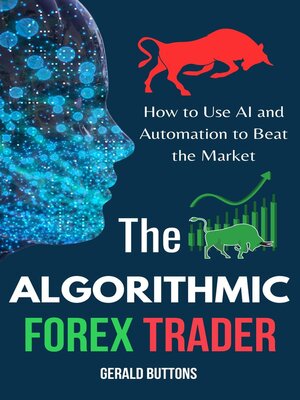The Algorithmic Forex Trader
ebook ∣ How to Use AI and Automation to Beat the Market
By Gerald Buttons

Sign up to save your library
With an OverDrive account, you can save your favorite libraries for at-a-glance information about availability. Find out more about OverDrive accounts.
Find this title in Libby, the library reading app by OverDrive.



Search for a digital library with this title
Title found at these libraries:
| Library Name | Distance |
|---|---|
| Loading... |
The foreign exchange market operates around the clock, driven by global events, shifting economic policies, and unpredictable human emotions. Traders who rely solely on instincts and traditional strategies often find themselves at a disadvantage, struggling against the speed and precision of modern financial technology. Algorithmic trading changes the game, removing emotional biases, increasing execution efficiency, and enabling traders to analyze vast amounts of data in seconds. With the right approach, AI-powered strategies can tilt the odds in favor of those who understand how to harness them.
Markets are not random. They follow patterns, react to stimuli, and respond to signals that many fail to recognize in real time. Algorithmic forex trading capitalizes on these market inefficiencies, using automation to process trades at speeds no human could match. The ability to backtest strategies against historical data, optimize parameters, and execute trades without hesitation gives an edge that manual traders simply cannot replicate.
The use of artificial intelligence in trading extends beyond automation. AI-driven models adapt, learn, and refine their strategies based on evolving market conditions. Machine learning algorithms detect shifts in trends, identify high-probability setups, and execute trades with greater precision than traditional technical analysis alone. By integrating AI with forex strategies, traders move beyond guesswork, leveraging statistical probability and real-time data interpretation to maximize returns.
Understanding algorithmic forex trading requires more than just coding skills or access to high-powered trading platforms. Success lies in knowing which strategies to automate, how to structure risk management, and when to refine or discard underperforming systems. Poorly designed bots can drain accounts just as quickly as they were funded. Well-built systems, however, create consistency, removing the human errors that lead to overtrading, revenge trading, and hesitation.
Retail traders often believe that algorithmic trading is reserved for hedge funds and institutional players. This misconception keeps many from exploring automation as a legitimate path to profitability. The reality is that retail traders now have access to the same tools, indicators, and computing power that professionals use to execute trades with precision. The difference lies in knowledge—understanding how to build, test, and implement these strategies effectively separates those who succeed from those who chase the market aimlessly.
This book provides an in-depth breakdown of how algorithmic forex trading works, from selecting and developing automated strategies to integrating AI-driven models into trading systems. Readers will learn how to use automation to execute trades without emotional interference, identify profitable patterns using machine learning, and avoid common pitfalls that lead to algorithmic failure. The book also explores risk management frameworks tailored for AI-driven strategies, ensuring that automation works for traders rather than against them.
By the time readers finish this book, they will have a clear understanding of how to leverage AI and automation to navigate the forex market with greater confidence. They will be equipped with the knowledge and tools needed to build and refine their own algorithmic trading systems, turning data-driven strategies into sustainable results.







